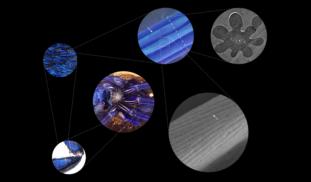Please wait...
About This Project
Many vibrant colors in nature are produced by nanostructures rather than pigments. But their application is limited by iridescence - changing hue and brightness with viewing angles. This project aims to mimic the nanostructures that tarantulas use to produce bright, non-iridescent blue colors to inspire next-generation, energy efficient, wide-angle color displays. Moreover, one day non-iridescent structural colorants may replace costly and toxic pigments and dyes.
More Lab Notes From This Project

Browse Other Projects on Experiment
Related Projects
Highly-sensitive, real-time enzyme methane oxidation rate measurements using an electrochemical assay
A low-cost, rapid, and highly sensitive assay is needed to measure methane gas oxidation rates by methane...
Engineering of a suction cup stethoscope for non-invasive monitoring of physiological sounds in baleen whales
Baleen whales are large-bodied predators that, despite their critical role in marine ecosystems, our understanding...
Building a better fish: Engineering fish for smarter aquaculture
What if we built a better fish instead of depleting wild fisheries? Natural stocks can’t keep up with demand...



